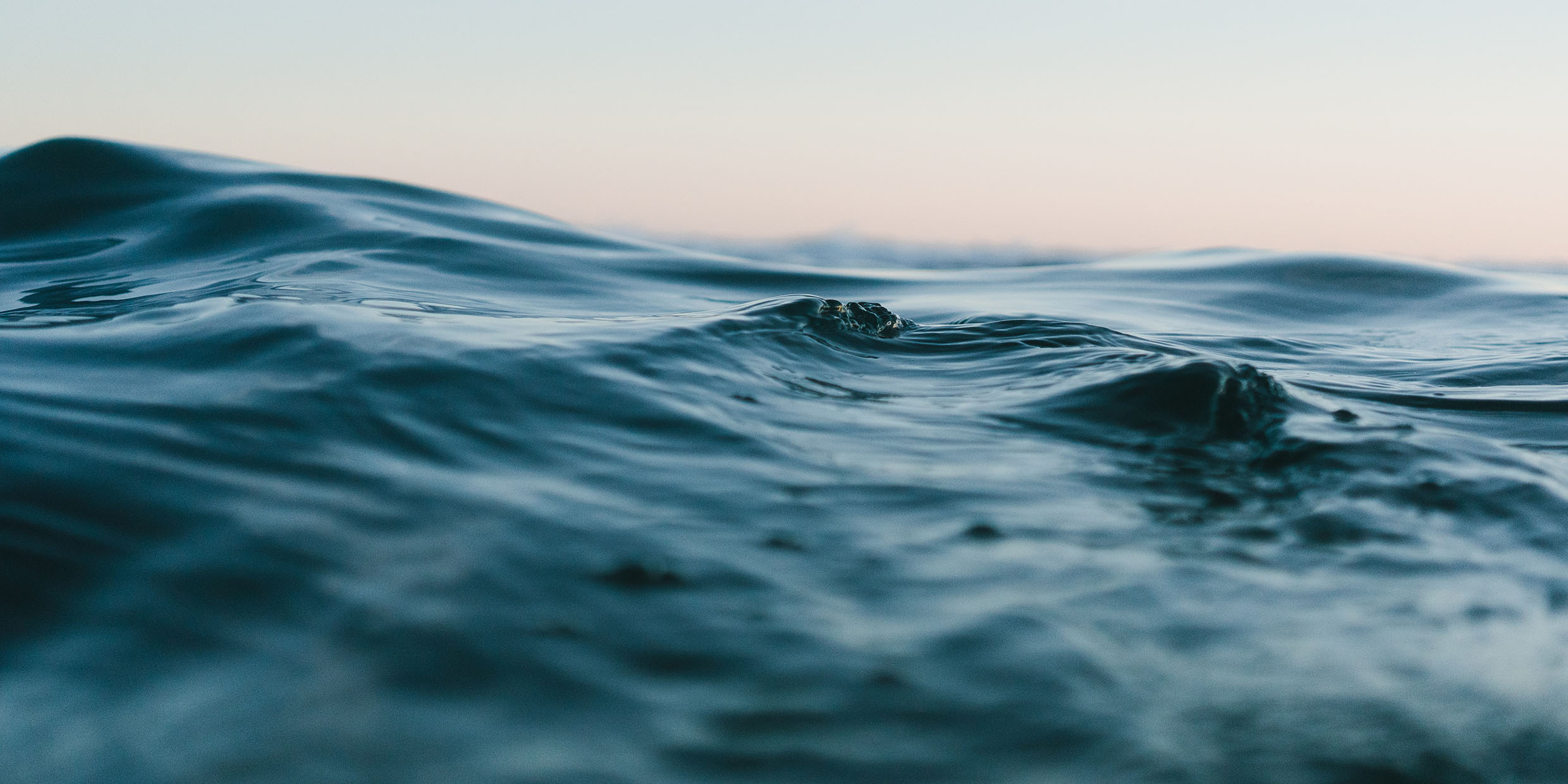Originally published 7 September 1998
We live on the Water Planet.
Nothing confirms this so vividly as a daytime crossing of the Atlantic Ocean at 30,000 feet. Viewed from an airplane in mid-ocean, the sea stretches in every direction to far horizons, apparently shrink-wrapping the planet in liquid H2O.
Photographs of the entire Earth from deep space show almost three-quarters of the surface covered with water or sea ice. Of the one-quarter that is dry land, a significant part is covered with ice, mostly in Greenland and Antarctica. Of the rest, more than half is under cloud at any given time — the visible signature of water in the atmosphere.
And what strange, animating stuff water is — almost as if our soppy planet were uniquely designed to be the cradle of life.
Perhaps the most felicitous quality of water is that it is a liquid at moderate temperatures. Most other substances consisting of similarly small molecules — such as methane, ammonia, and hydrogen sulfide — are gases.
Liquid water is an excellent solvent that bathes living cells in nutrient-rich solutions, transports substances within cells, and helps flush away the toxic detritus of life. Fortunately, water doesn’t dissolve calcium phosphate, which is why our bones don’t melt away.
Unlike almost every other substance, water expands as it freezes, which means that lakes and ponds freeze from the surface down, rather than from bottom up, a fortuitous circumstance for aquatic creatures that live in cold climates.
Water is so uniquely favorable to life as we know it, it is hard to imagine life without it.
Where did it come from, this planetary wrap of fluid, this liquidy bower?
A standard story is that the heat of the young Earth drove hydrogen and oxygen atoms out of chemical combination in minerals like mica, which then combined to form water.
Four billion years ago, the planet was mostly molten, heated by radioactivity and the violence of its formation — a vast spherical volcano — and the newly formed water bubbled up out of the fiery depths as steam. Later, as the planet cooled, the Earth’s shroud of gaseous moisture precipitated as rain, which collected in the broad, deep hollows of the newly-formed crust. As the chemist P. W. Atkins says: “Our oceans were once our rocks.”
Another possibility is that the water was already there in the gassy nebula out of which the solar system formed.
Earlier this year [in 1998], a team of astronomers using the Infrared Space Observatory (ISO) discovered what appears to be a massive water generator in a cloud of gas near the Great Orion Nebula, 1,500 light-years away.
The Earth-orbiting telescope picked up the unmistakable radiation of water molecules, the largest concentration of water ever seen outside of our solar system.
The target nebula is mostly hydrogen, but it also contains free oxygen. A hot young star embedded in the nebula spews off powerful shock waves of gas that pummel and heat the nebula, causing oxygen to combine with hydrogen, creating enough water in a single day to fill the Earth’s oceans 60 times over.
“Eventually that water vapor will cool and freeze,” says David Neufield, one of the ISO astronomers, “turning into small solid particles of ice. Similar particles were presumably present within the gas cloud from which the solar system originally formed. It seems quite plausible that much of the water in the solar system was originally produced in a giant water-vapor factory like the one we have observed in Orion.”
Plausible, but not certain. Other astronomers wonder how such pre-formed particles of ice could have survived the violence of planetary formation.
Perhaps the wildest idea is that of physicist Louis Frank of the University of Iowa, who believes the Earth gathered its water from space after the crust was formed.
According to Frank, the Earth is pelted every day by tens of thousands of house-size cosmic snowballs — a continuous rain of mini-comets. He bases his theory on fleeting dark spots seen in ultraviolet images of the Earth’s upper atmosphere made by orbiting satellites.
Frank’s idea has received lots of media attention, but it has not gathered much support in the wider scientific community. The idea of the oceans slowly filled by iceballs from space will require more proof than Frank has so far mustered.
The Greek philosopher Thales of Miletus—who might reasonably be considered the first scientist — believed water was the original substance of the universe. He observed that the seeds and nutriments of everything are moist, and from this deduced that everything comes from water.
He was certainly right about the primacy of water for life, but he was wrong in believing that water is the original substance. We now know that water is composed of two more basic substances — hydrogen and oxygen — and we have a pretty good idea where those more basic elements came from. The hydrogen was apparently created in the Big Bang, 15 billion years ago; the oxygen was forged in the violence of exploding stars that lived and died before the Earth was born.
What remains to be discovered, is how and where the hydrogen and oxygen were forced together to create the quintillions of tons of life-giving substance that covers the surface of our planet like a silvery sheath.



